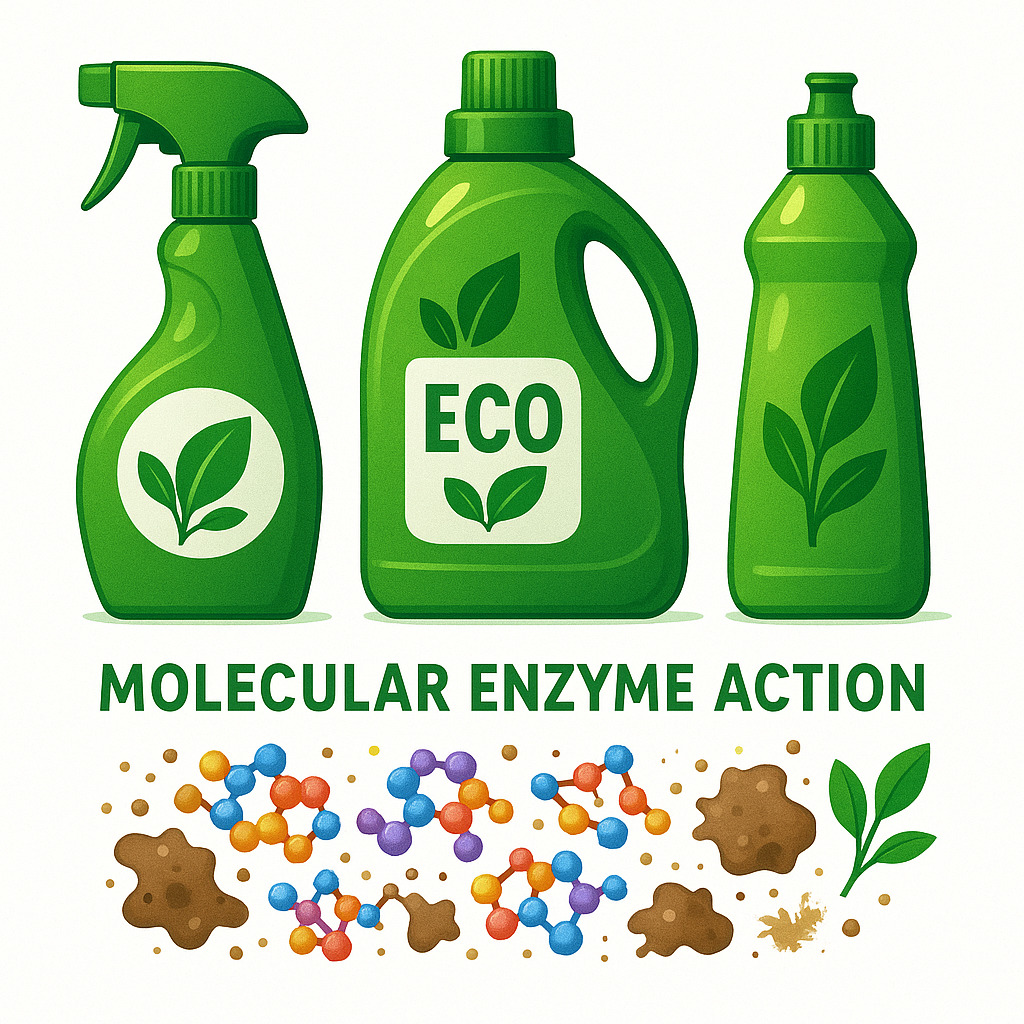Transform your cleaning routine into an environmentally responsible ritual by swapping harsh chemicals for nature-derived powerhouses. Advanced enzyme formulations, biodegradable surfactants, and bio-solvents work in harmony to deliver sparkling surfaces without compromising the planet’s health.

1. The Green Cleaning Revolution
Modern consumers demand performance and sustainability. Traditional cleaners rely on petrochemicals and persistent surfactants that harm waterways and ecosystems. By contrast, enzyme-based and bio-derived ingredients break down stains naturally, biodegrade rapidly, and leave behind no toxic residues.
2. Enzymes: Nature’s Stain-Fighting Catalysts
Enzymes are specialized proteins that target and deconstruct organic soils:
- Proteases tackle protein-based stains like blood, egg, and dairy.
- Amylases break down starches from pasta, rice, and sauces.
- Lipases dissolve fats and oils on kitchen surfaces.
These biocatalysts accelerate stain removal at lower temperatures, saving energy and extending fabric life. Formulations remain gentle on skin and surfaces.
3. Biodegradable Surfactants: Gentle Yet Effective
Surfactants reduce water’s surface tension, loosening dirt for easy rinsing. Biodegradable options include:
- Sugar‐derived surfactants from glucose or sucrose.
- Amino acid–based surfactants sourced from plant proteins.
- Alkyl polyglucosides (APGs), known for low toxicity and high mildness.
These surfactants break down into harmless molecules in wastewater treatment, minimizing ecological impact.
4. Bio-Solvents: Tackling Tough Grease Naturally
Bio-solvents replace petroleum-derived solvents with renewable, plant-based alternatives:
- d-Limonene, extracted from citrus peels, excels at cutting grease.
- Ethyl lactate, produced from corn sugars, dissolves adhesives and inks.
- Methyl soyate, derived from soybean oil, removes oily residues.
Their pleasant natural scents eliminate the need for artificial fragrances and VOC-emitting chemicals.
5. Synergy for Superior Cleaning
Combining enzymes, biodegradable surfactants, and bio-solvents creates a multimodal approach:
- Bio-solvents dissolve heavy oils.
- Surfactants emulsify loosened oils and lift dirt.
- Enzymes break down residual organic matter at a molecular level.
This layered strategy delivers a deeper clean — all at ambient temperatures and without phosphate or chlorine.
6. Practical Tips for Green Cleaning
- Choose concentrates to reduce plastic waste and transportation emissions.
- Opt for refill-able packaging.
- Store enzyme cleaners above 10 °C to maintain activity.
- Pair with microfiber cloths for streak-free results.
7. Beyond the Bottle: Sustainable Habits
- Line-dry laundry to save energy.
- Use cold water whenever possible.
- Compost food scraps to reduce organic load in drains.
No comments:
Post a Comment